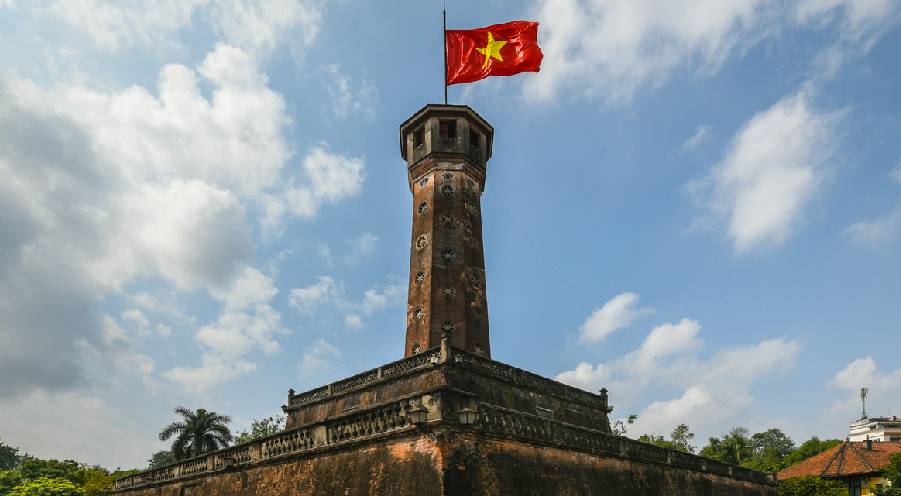Hanoi Flag Tower – A historical symbol of the Capital
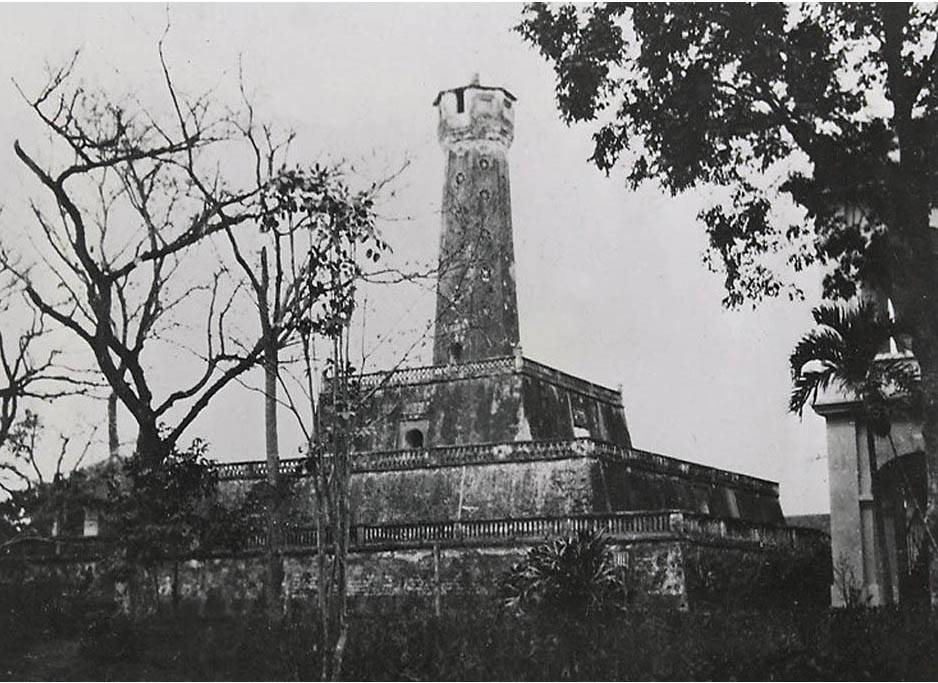
Besides the Temple of Literature and Ho Guom Turtle Tower, Hanoi Flag Tower has also been considered as one of the symbols of the Capital. This is the most special and monumental work in the Imperial Citadel of Thang Long complex, representing the indomitable and brave Hanoi people in the Anti-French Resistance War.
With unique ancient architecture and the image of a yellow star centered on a red field fluttering in the sky for 65 years, Hanoi Flag Tower has become an indispensable destination for tourists in the journey to discover this city of thousand-year history.
1. History of Hanoi Flag Tower
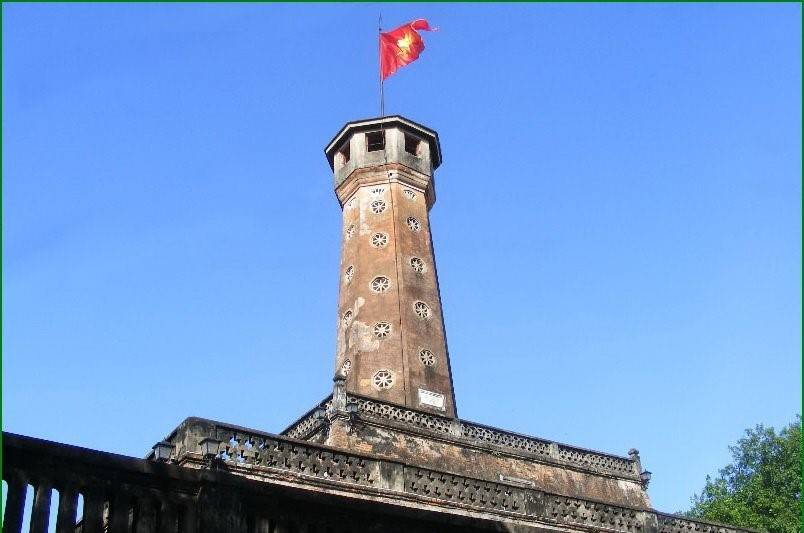
Hanoi Flag Tower was built in the 19th century on the land of Thang Long Imperial Citadel – also the old ground of the Tam Mon citadel (Le dynasty). Today, it belongs to the campus of Vietnam Military History Museum, on Dien Bien Phu street, opposite Lenin flower garden, in Ba Dinh district. Through different periods, especially the two resistance wars against France and America, this work is still intact in its original form.
From 1805 to 1812, King Gia Long (Nguyen dynasty) built the flagpole as an observatory; from the window at the top, we can have a decent panorama view of the whole city; that’s why the French colonialists did not destroy the place during 1894 – 1897. On the contrary, they also turned this work into an observatory with the use of lights and flags to make communication between the commands and other units around.
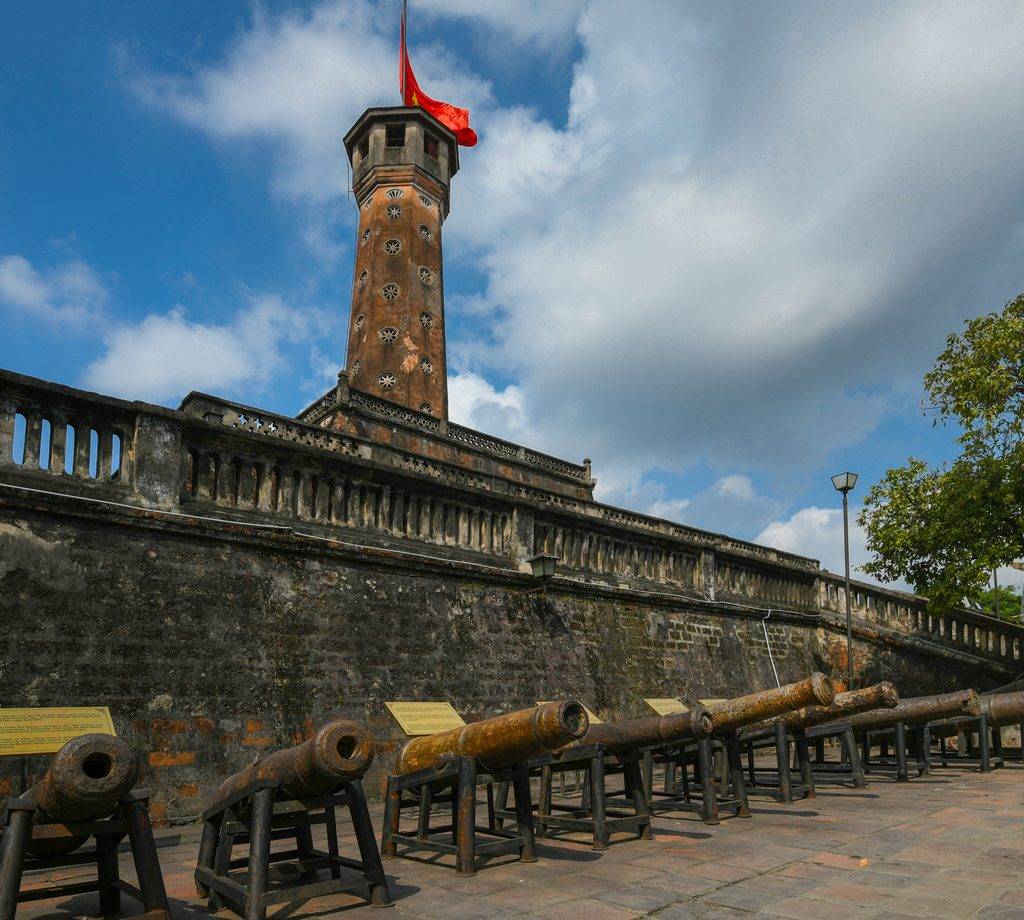
Later, during the war against the US Army, the building was retrieved and used for a similar purpose by the Hanoi air defense troops. By 1945, after the August Revolution was successful, the red flag with a yellow star was also placed on top of the flagpole for the very first time. By 1954, when the Anti-French war was completely successful, the National Flag was once again fluttering on the tower.
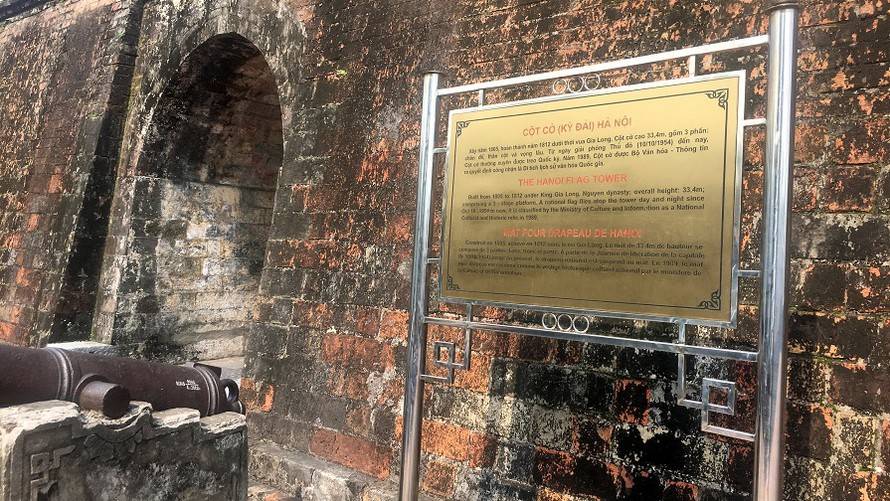
In the memories of Hanoians, the flag tower represents their victory; the whole capital was extremely jubilant at that time with groups of people gathering around the Hanoi Flag Tower to wait for the historical flag-raising ceremony. At 15:00 on October 10, 1954, the national anthem was resounded in cheers while the flag was gradually lifted up. Since then, the image of a red flag with a yellow star centered flying on the flagpole has become a symbol of the independence of the Democratic Republic of Vietnam. By 1989, it was officially recognized as a historical monument.
Read more: VIETNAM MUSEUM OF ETHNOLOGY- THE ATTRACTIVE LOCATION IN HANOI
2. How to move to Hanoi Flag Tower
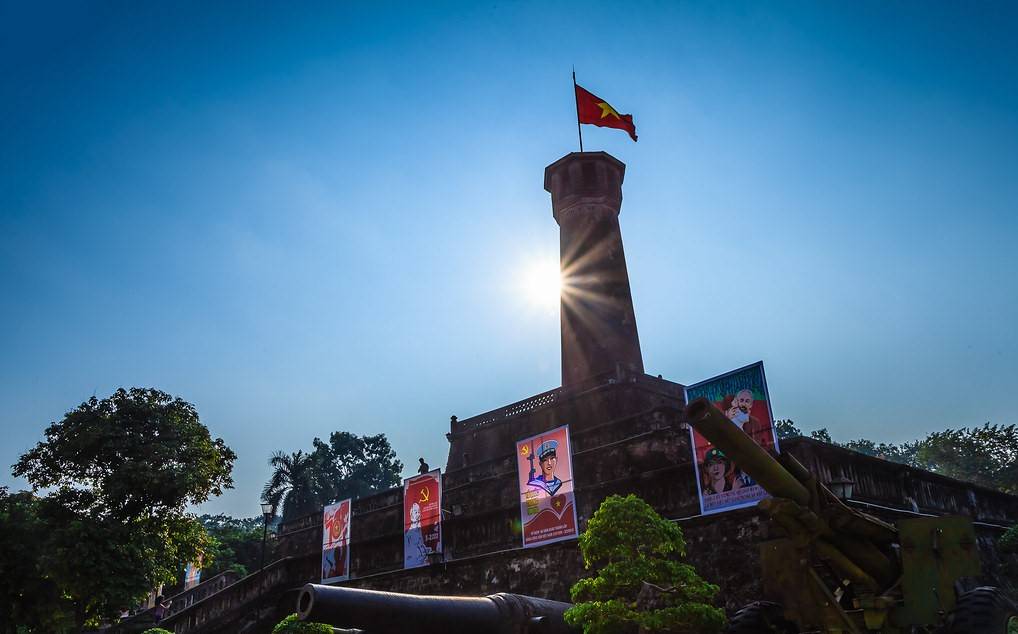
– Address: Dien Bien Phu street, Ba Dinh district
– Admission: 20,000 VND / person
– Opening hours: 9 am to 5 pm
The flagpole is situated right in the heart of Hanoi, less than 1km from Hoan Kiem Lake, which is really convenient to visit by bus or bike. For exact location, you can ask for directions to Cua Nam and Uncle Ho’s Mausoleum and from there, you will see the flagpole.
3. The special architecture of Hanoi Flag Tower
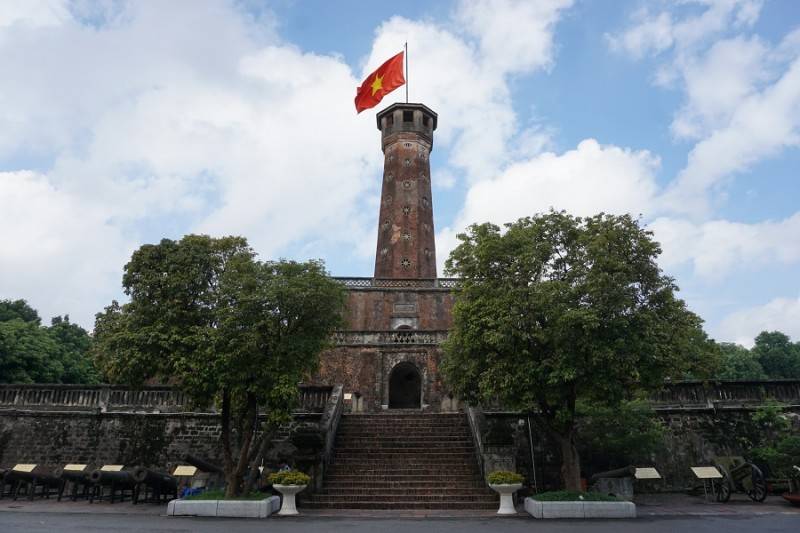
The tower features three floors and a pillar. The base floors are square, gradually smaller, and overlapping with brick tiles covering around. The first floor is 42.5m long and 3.1m high, led up by two brick ladders.
The second floor is 27m long and 3.7m high with 4 doors; the upper East door has two words “Nghenh Huc” (welcome the morning light); the West door with two words “Hoi Quang” (light reflects); the South door with two words ” Huong Minh ”(towards light); and the North gate has no words. The reason for naming each door is to determine the direction at every corner.
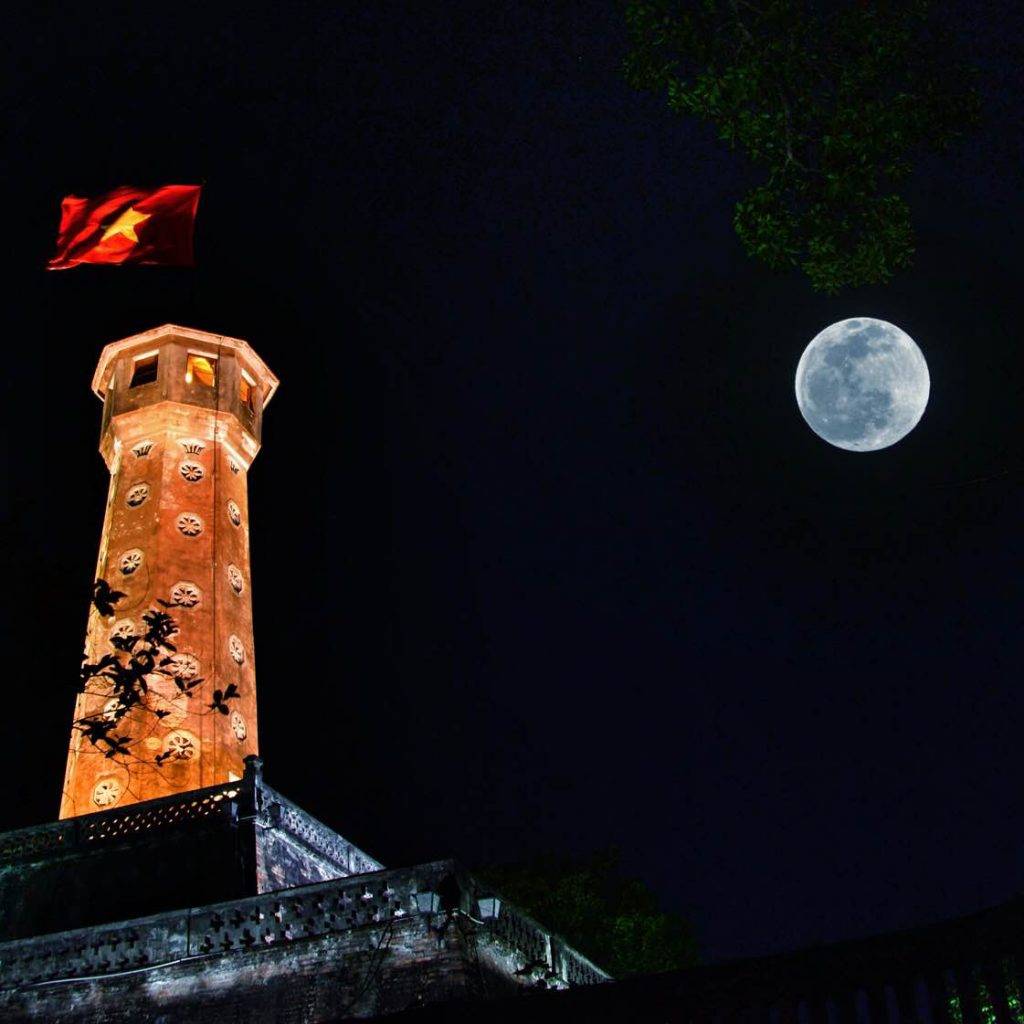
The third floor is 12.8m in length; 5.1m in height with a door to the stairs looking North. This floor is also the body of the flagpole; 18.2m high, eight-sided cylindrical, tapering upwards; each bottom edge is about 2m. In the pillar’s body, there is a 54-step staircase, spiral to the top; the width is just enough for one person. The whole building is illuminated (and vented) by 39 fan-shaped holes around.
The top floor formed an octagonal shape; 3.3 m high with 8 windows corresponding to eight sides. The tiled roof is like a helmet; in the middle of the top is an iron pillar (8m high) with pulleys to hang the flag. The entire flagpole is 33.4m high, if, including the flag handle, it is 41.4m.
The balanced layout of Hanoi Flag Tower has created straight and steady lines. Although it looks super high from the foot of the flagpole, we don’t feel any heaviness; on the contrary; it is quite harmonious and elegant.
Read more: HOA LO PRISON – THE HISTORY SITE IN HANOI
4. Tourist attractions near Hanoi Flag Tower
– Imperial Citadel of Thang Long
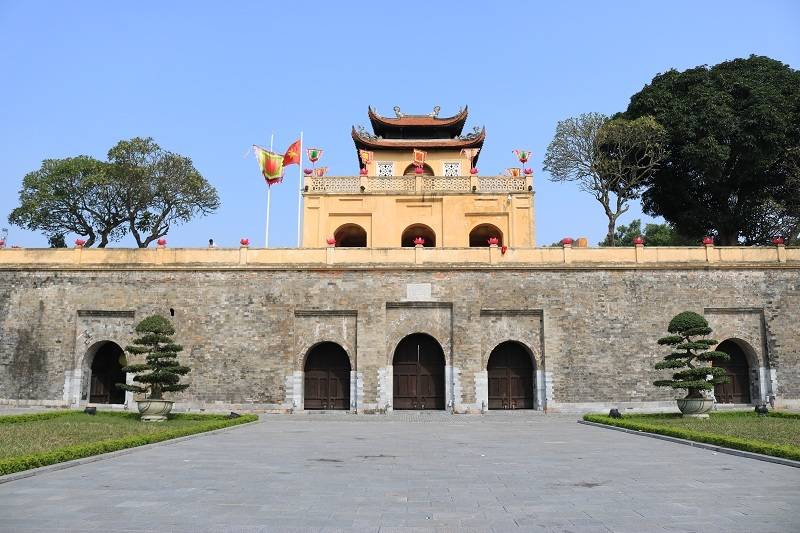
Located at 19C, Hoang Dieu – Quan Thanh, Ba Dinh district, about 600 meters from the flagpole, the Imperial Citadel of Thang Long is a massive architectural complex built through numerous kings’ dynasties. The place brings a high historical value.
– Vietnam Military History Museum
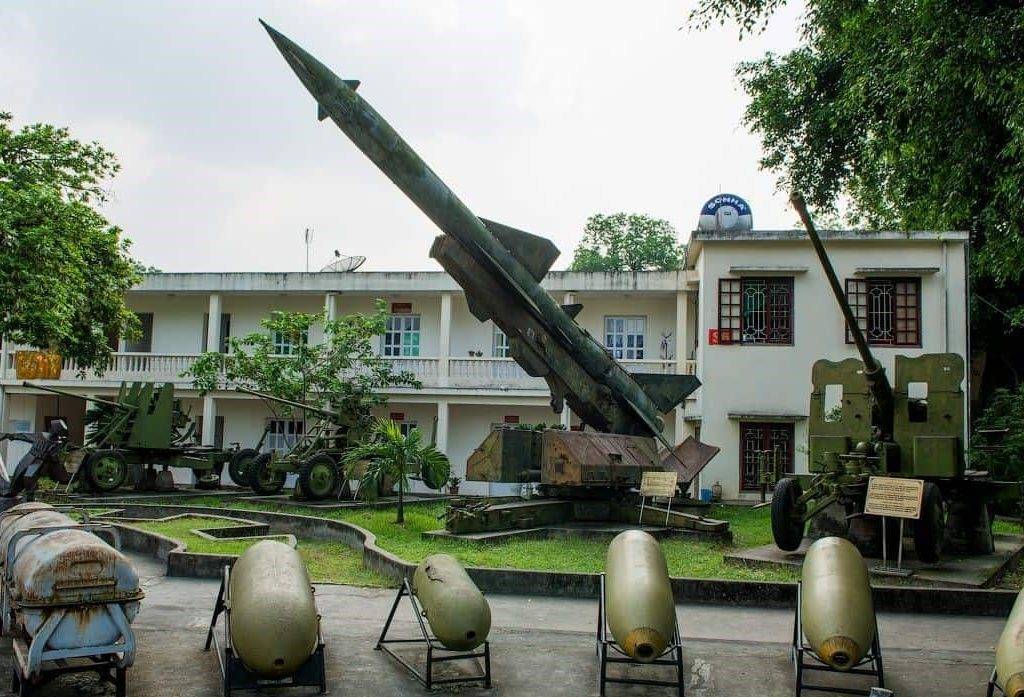
The museum, at 28A Dien Bien Phu, Dien Ban, Ba Dinh district; just 4 meters from Hanoi Flag Tower, is also a must-visit destination around the area. This is the first museum in the military museum system, which displays about 150,000 artifacts of historical, cultural, and military value during the wars against colonial invaders, from the reign of King Hung to the time of President Ho Chi Minh.
– Ho Chi Minh Mausoleum and One Pillar Pagoda
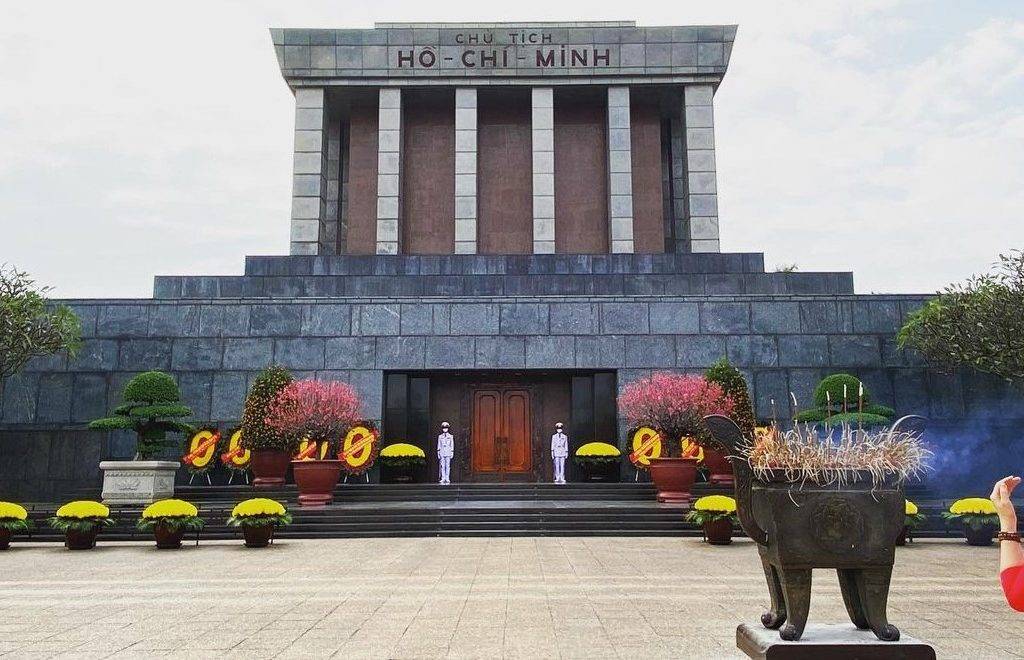
These two sites are about 900 meters from the flagpole. In addition to visiting Uncle Ho’s mausoleum, you can also come to the famous One Pillar Pagoda and many other spots around this complex, such as Uncle Ho’s stilt house, fish pond, Ho Chi Minh History Museum, etc.
Read more: Ho Chi Minh Mausoleum – The convergence of elite architecture and cultural space
Through many ups and downs of history, Hanoi Flag Tower with its unique design has become a witness to Vietnam war history as well as the great transformation of the nation. Therefore, it is obviously one of the destinations you should not miss when coming to Hanoi.
